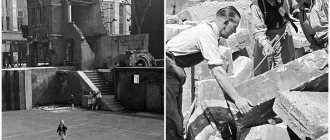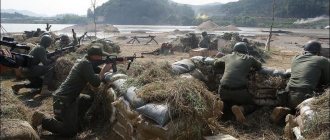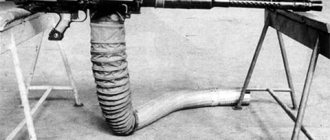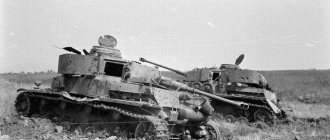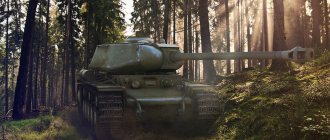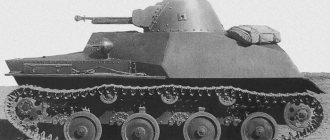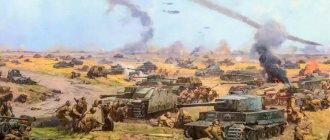80 years ago, on August 31, 1941, the Arctic sea convoy Dervish arrived in Arkhangelsk from Britain. It became the first “swallow” of military and economic assistance to the Soviet Union from the allies during the Second World War. In the ongoing hostilities with the strongest army in the world at that time - the Wehrmacht - the USSR played a decisive role. The USA and Great Britain helped according to the principle: tanks, planes, machine tools, medicines and food in exchange for human lives. Moreover, both their own soldiers and the soldiers of the Red Army. How much military equipment did the Soviet Union receive? What was he denied? How did the country's leaders evaluate the assistance? Lenta.ru recalls the course of events.
Order of Lenin to British pilots
At the end of the summer of 1941, six dry cargo ships and one tanker arrived at the port of Arkhangelsk. They safely delivered 25 thousand tons of various cargo from Liverpool: about eight thousand tons of high-quality fuel, about two thousand depth charges and magnetic mines for protection against German ships and submarines, ten thousand tons of rubber and tin, one and a half thousand army boots and 39 Hawker Hurricane fighters . The convoy at different parts of the route was vigilantly guarded by 15 warships of the Royal Navy, led by two aircraft carriers.
But the most important thing is that several hundred people from the 151st wing (analogous to the Soviet aviation regiment) arrived on the ships. British pilots were supposed to take part in protecting the northern ports of the USSR from Nazi aircraft, as well as train their Soviet colleagues in handling foreign aircraft.
The British came under the operational control of the Northern Fleet and, until October 1941, carried out 365 sorties, shooting down, according to various estimates, from 12 to 16 German aircraft
They also protected ground troops and the city of Murmansk from Luftwaffe raids.
The British departed home at the end of October, as soon as they completed the retraining of Soviet pilots on the Hawker Hurricane. The vehicles were transferred to the formed 78th Fighter Regiment under the command of the future twice Hero of the Soviet Union Boris Safonov. Four Royal Air Force pilots were awarded the Order of Lenin.
Valentine III-V
| Regions of admission | Total | Valentine III-V tanks |
| to the ports of the North | 1727 | 33 |
| to the ports of the South | 1007 | 49 |
| to the ports of the East | 80 | — |
| Total by type | 2814 | 82 |
The death of mountain rangers at the bottom of the sea
The British fleet also provided significant assistance. In August 1941, the German offensive on Murmansk was stopped by the Red Army at the turn of the Zapadnaya Litsa River, and the Nazis urgently needed fresh reserves. The 6th Mountain Division was boarded in Northern Norway and moved to the Soviet shores. One of the first troop convoys was attacked on August 30 by the Trident submarine. As a result, the transports Donau II and Bahia Laura were sunk. German losses amounted to at least 342 mountain riflemen, 16 vehicles and almost 200 horses.
Another caravan with units of the 6th Mountain Division was driven into the Norwegian fjords on September 6 by the British cruisers Aurora and Nigeria. Having lost the artillery training ship Bremse in battle, the Germans refused from September 15, 1941 any transfer of troops by sea. As a result, the land redeployment of mountain rangers through Finland was completed only with the onset of cold weather. This negated the threat of a third assault on Murmansk.
Bridgelayer
| Regions of admission | Total | "Valentine" bridge layer |
| to the ports of the North | 1727 | 25 |
| to the ports of the South | 1007 | — |
| to the ports of the East | 80 | — |
| Total by type | 2814 | 25 |
Or a second front, or economic assistance
Joseph Stalin appreciated the words of his old political enemy. The two leaders immediately entered into correspondence, discussing war strategy. On July 12, 1941, Moscow and London signed an agreement on joint actions against Germany and its allies. The document became the beginning of the creation of the anti-Hitler coalition.
On July 18, 1941, when the First Strategic Echelon of the Red Army was defeated in border battles and the Germans captured Smolensk, Stalin suggested that Churchill create two fronts - in northern France and in the Arctic. “Here, only the actions of the British naval and air forces will be required without a landing of troops, without the landing of artillery,” the head of the Soviet government emphasized. In response, the British Prime Minister promised to help his country’s aviation and navy to protect the Arctic, as well as to arrange the delivery of necessary materials.
Joseph Stalin and Winston Churchill at the Yalta Conference, 1945
Photo: British Official Photo/AP
On September 3, Stalin, thanking him for the promise to sell 400 aircraft to the USSR, described to his English colleague the difficult situation in the country. The enemy was at the gates of Leningrad, more than half of Ukraine was lost, including the Krivoy Rog iron ore basin and a number of metallurgical plants. Industrial enterprises are being evacuated to the east and will be able to produce products no earlier than in a few months.
Stalin told his interlocutor that there were only two ways to avert the mortal threat to the USSR: either create a second front in France or the Balkans, or provide monthly assistance by supplying at least 500 tanks and 400 aircraft:
Without these two types of assistance, the Soviet Union will either be defeated or weakened to the point that it will permanently lose the ability to provide assistance to its allies through active actions on the front of the fight against Hitlerism
Faced with this choice, Churchill chose the economic option, promising to open a second front in the future.
M10
| Regions of admission | Total | Self-propelled gun M10 |
| to the ports of the North | 1727 | — |
| to the ports of the South | 1007 | 52 |
| to the ports of the East | 80 | — |
| Total by type | 2814 | 52 |
Shortage of tanks, aircraft and shells
The situation was indeed extremely difficult. By the end of 1941, losses in aviation and tanks in the Red Army amounted to more than 21 thousand aircraft and 20.5 thousand armored vehicles, and the vehicle fleet was very thin. There was an acute shortage of ammunition - during the six months of fighting, the Red Army units spent mainly shells produced in the pre-war period. The incoming products amounted to no more than 60 percent of what was planned.
Soviet industry could not make up for the deficit, since from July to November 1941, 1,523 industrial enterprises, including 1,360 large factories, were relocated to the Volga region, Siberia and Central Asia.
Sending a Valentine tank to the USSR from Great Britain, September 22, 1941
Photo: Public domain/British Ministry of Information
The evacuation of Moscow and Leningrad chemical enterprises and the loss of Donbass with its developed chemical industry led to a sharp decrease in the production of explosives, including gunpowder. Having lost the Donetsk coal basin, the USSR also lost more than 60 percent of coal production. There was also a shortage of oil, nickel, aluminum, zinc and cobalt.
In general, during the second half of 1941, the gross output of domestic industry fell by more than half, and the level of production in almost all industries in November and December became the lowest for the entire period of the war.
Help “on a friendly basis”
Help from Great Britain was not free of charge. On August 16, 1941, an agreement was concluded in Moscow between the State Bank of the USSR and the Bank of England to provide a loan in the amount of 10 million pounds sterling at three percent per annum. The government of the Soviet Union agreed to pay for 40 percent of the supplies in gold, and the rest through credit. The amount was increased several times during the war and by 1945 it was £60 million.
At the same time, on June 27, 1942, the parties signed a document according to which they had to pay only for raw materials and equipment. Tanks, planes, ships, and ammunition began to be supplied free of charge.
Cromwell
| Regions of admission | Total | Cromwell A 27 tanks |
| to the ports of the North | 1727 | — |
| to the ports of the South | 1007 | 6 |
| to the ports of the East | 80 | — |
| Total by type | 2814 | 6 |
Armored vehicles in exchange for furs and precious metals
During the Second World War, the United States supplied machinery and equipment to 40 countries worth $46 billion. The first and main recipient of American aid was Great Britain (more than $30 billion), the second was the Soviet Union (more than $10 billion).
On October 1, 1941, in Moscow, representatives of the United States and Great Britain William Averell Harriman and William Aytkem signed the first protocol on military assistance to the USSR. According to the document, until June 30, 1942, the Allies pledged to supply the Soviet Union with 500 tanks, 400 aircraft, including 100 bombers, and 200-300 anti-tank rifles every month. As well as aluminum, molybdenum, toluene, cobalt, tank steel and a number of other materials of a military nature - in particular, anti-aircraft guns and radio stations.
Red Army soldiers under the cover of a Matilda Mk tank. II go on the attack, 1942
Photo: Anatoly Garanin / RIA Novosti
In exchange for this, Moscow expressed its readiness to supply Washington and London with raw materials for military production, which these countries lacked. It was, in particular, about ore, furs, timber, precious stones and metals, cotton and a number of other goods.
During the war, in addition to the Moscow protocol, the Washington, London and Ottawa protocols were signed, which extended supplies until the end of hostilities in Europe. On October 28, 1941, Lend-Lease was extended to the USSR, and it was granted a loan of one billion dollars.
New in blogs
Recently, materials have increasingly appeared on social networks that the USSR “survived the war thanks to generous American supplies of food and weapons under Lend-Lease.” The conditions of Lend-Lease for the USSR are discussed in passing; they prefer to remain silent about its quality. It is also silent about the fact that American corporations simultaneously helped the Wehrmacht - both ours and yours.
Lend-Lease was not an act of charity
On the eve of the 75th anniversary, the falsification of the results of the Second World War is intensifying, which has already acquired enormous proportions. Even foreign historians have proven that the outcome of the war was determined by the battles on the Soviet-German front, where three and a half times more German divisions were defeated than on all other fronts.
However, today a significant part of the youth of Europe and America is confident that England, France and the USA won the war, but the USSR did not win, but survived only thanks to American and British supplies under Lend-Lease. And now they are trying to instill this distortion in Russian youth and schoolchildren through social networks, including some of our home-grown “experts.”
Associate Professor of the Department of Social and Political Sciences of the Bashkir Branch of the Academy of Military Sciences Rimma Fedko spoke about the “generosity” of American supplies under Lend-Lease: “Back in 2009, PACE named the USSR, along with Hitler’s Germany, guilty of unleashing the Second World War. This process was carefully organized and paid for. In the same year, a commission was created in Russia to counteract the distortion of history to the detriment of Russia.
As for the alliance: nowhere in the Internet falsifications will you find official statements regarding the opening of a second front (summer 1944) by General Eisenhower in his memoirs: “There was virtually no second front by the end of February 1945, because the Nazis surrendered in thousands.” You won’t find Churchill’s words: “All our military operations are carried out on a very small scale compared to the gigantic efforts of Russia.”
Deliveries under Lend-Lease, according to R. Fedko, in reality the USSR received only four percent of the agreed (sent across the ocean) volumes of food and weapons. A significant part of the convoys were sunk by the Germans.
adviser Frank Walker said in a meeting with Stalin: "We never believed that our Lend-Lease assistance was the main factor in defeating Germany on the Eastern Front." The Report to the US Congress indicated that the Soviet army was supplied mainly with Soviet weapons, materials, clothing and food. Lend-Lease deliveries were carried out irregularly, with long interruptions.
And the main thing that is not mentioned is that the English historians Barber and Garrison argued that Lend-Lease was never an act of charity. The very concept of Lend-Lease from English. “lend” - lend and “lease” - rent - a kind of lending program for US allies through the supply of equipment, food, equipment, raw materials and supplies.
When Stalin was shown an invoice for the services of Western companies that had benefited from Roosevelt's government orders, he became boiling and demanded that everything be double-checked and recalculated. The Americans presented the USSR with an astronomical bill - $2.8 billion, which was a crazy amount at that time. When, at Stalin’s request, everything was counted by commission, they agreed on 720 million dollars. The grandiose robbery did not work out of common misfortune.
Allied tanks “Farewell to the Motherland” and “grave for six”
American stew and cars (480 thousand units) have become legendary, and there is a lot of talk about planes and tanks. For example, our tankers called the English tank “Matilda” “Farewell, Motherland”, and the American M3 “Lee” - “a three-story nightmare” and “a grave for six.” The best Sherman tanks supplied to the United States were only outdated modifications.
Because of their thin armor, they were easily knocked out, and their guns and TTDs were significantly inferior to both our and German tanks in firing range and caliber, surpassing the T-34 only in terms of comfort, but they burned like fires. The planes were better, but the English Hurricanes burned like torches - Churchill “squeezed” his Spitfires, which at that time competed with the Messerschmitts.
The Americans also supplied the latest fighters, such as the Mustang, neither they nor the British supplied us with almost any of their advanced military equipment, with the exception, perhaps, of the Aircobra and Kingcobra, and only because the USA themselves are excellent fighters For some reason they rejected it for their Air Force.
There were many problems with other types of Allied weapons; they were clearly inferior to German models, although American cargo vehicles were indeed good, but they did not decide the outcome of the battles. However, at the most critical moments - the battle of Moscow and Stalingrad, the USSR did not receive help.
During the reverse Lend-Lease, the United States received from the USSR raw materials equal to 20 percent of the cost of American weapons and food, in addition, we sent 43 tons of pure gold to the United States. But this data is now being hidden by the Western media.
In 2006, Russia completely repaid the Lend-Lease debt
The essence of Lend-Lease was quite simple. According to the Lend-Lease law, the United States could supply equipment, ammunition, and equipment to countries whose defense was vital for the United States itself. All deliveries were free of charge. The United States did not demand compensation for military equipment destroyed during the battles. The decommissioning and destruction of military equipment was agreed upon. The USSR decided to completely write off all military equipment received under Lend-Lease: tanks, guns, tractors, military aircraft and vehicles.
Property remaining after the end of the war and suitable for civilian purposes had to be paid for; the Americans insisted on paying only for civilian supplies: railway transport, power plants, ships, trucks, and other equipment that was in the recipient countries as of September 1945 . The volume of American supplies under Lend-Lease amounted to about 10.8 billion dollars.
Lend-Lease deliveries to the USSR ceased in August 1945. Immediately after the war, the United States sent countries that received Lend-Lease assistance an offer to return surviving military equipment and repay the debt. After the end of the war in the USSR, Studebakers and Jeeps were loaded onto ships and sent back, where they were either used, or more often simply destroyed.
According to the agreement, only equipment that survived the war was subject to payment; To agree on the final amount, Soviet-American negotiations began immediately after the end of the war. By the way, for 40 countries the conditions under Lend-Lease were much more favorable than for the USSR, which bore the brunt of the war.
Stalin was ready to pay the agreed portion, but the West started the Cold War, and payments were suspended. After signing the agreement and normalizing relations with the United States, in 1973 the USSR paid 48 million dollars, then payments were stopped due to the introduction of discriminatory measures by the American side in trade with the USSR (Jackson Vanik amendment).
In 1990, during negotiations between the presidents of the United States and the USSR, the parties returned to discussing debt. After the collapse of the USSR, the question arose: to whom did the obligations on the debts of the former USSR, including debts under Lend-Lease, pass?
In 1992-1994, Russian President Yeltsin signed bilateral “zero option” agreements with the successor countries of the USSR, according to which Russia assumed servicing of the entire national debt of the former USSR in exchange for the other republics renouncing their almost half share in all Soviet assets. In 2006, Russia fully repaid its Lend-Lease debt.
Above the table in Hitler's office hung a portrait of his idol Henry Ford.
However, the United States supplied equipment, electronics, fuel, engines, drinks, spare parts, cars to the Third Reich; supplies to Germany from overseas did not stop during the war until 1944 inclusive, including when American soldiers died. Today, European and overseas falsifiers of history prefer not to talk about this – it’s taboo.
It was a kind of unadvertised American Lend-Lease for Hitler. When our soldiers saw American Fords, Dodges, Plymouths and even Studebakers with crosses and swastikas among the Germans, they became indignant: “Allies, your mother...”.
Ford was generally one of the main suppliers of trucks to the Wehrmacht, and its main competitor, General Motors, which owned them, was not far behind. In 1931, American journalist Annetta Antona of the Detroit News interviewed Adolf Hitler. Above his desk in his Munich office hung a portrait of the owner of the Ford Corporation, Henry Ford . In a surprising response, Hitler replied, “I consider Henry Ford as my inspiration.” The Fuhrer wrote with admiration about Ford in his book “May Kampf”, and in response, Henry annually congratulated Adolf on his birthday and gave him a “gift” worth 50 thousand Reichsmarks.
It was thanks to G. Ford, as well as a number of the largest moneybags in the United States, that there was a hidden growth in the military potential of Nazi Germany. Just before the start of the war, Germany received 65 thousand trucks from Ford branches in Germany, Belgium and France - Fords became the main army truck of the Wehrmacht.
Henry Ford helped the Germans obtain rubber, vital for German industry. In 1940, he refused to assemble engines for aircraft in England, which was at war with Germany; at that time, in Poissy , his new plant began producing aircraft engines, trucks and cars for the Hitlerite army, which went into service with the Wehrmacht.
Until the very beginning of World War II, the owner of the US auto giant supplied Hitler with military equipment, for which, in honor of Ford’s 75th anniversary, the Fuhrer awarded the hero of the day the highest award of the Third Reich for foreigners - the “Grand Cross of the German Eagle,” as written by the American military historian Henry Schneider .
Nothing personal just business
For the aviation of the Third Reich, other American aircraft supplied thousands of aircraft engines and, most importantly, licenses for their production. For example, the BMW Hornet engines that powered Germany's most popular transport aircraft, the Junkers 52, were produced under license from the American company Prat & Whitney. General Motors in Germany owned Opel.
The factories of this company produced armored vehicles of the Reich, as well as almost 50 percent of the power units of the Ju-88 bombers. In 1943, the German subsidiary of General Motors developed and began producing engines for the Messerschmitt 262, the first jet fighter of the Luftwaffe.
By the time the Second World War began, the total contributions of American corporations to their German branches and representative offices amounted to about $800 million. Investments from Ford - 17.5 million, Standard Oil of New Jersey (now Exxon) - 120 million, General Motors - 35 million, ITT - 30 million.
The dark history of close collaboration with the Nazis was associated with the SKF concern, the world's largest manufacturer of ball bearings. The US multinational telephone corporation International Telegraph, controlled by the Morgans, worked hand in hand with German colleagues in Switzerland, protected by the German intelligence services. One of the shareholders of ITT was the head of political intelligence
Security Services Walter Schellenberg and SS-Brigadeführer Kurt von Schröder. The V-missiles falling on England also carried some of the finished products supplied by ITT.
Almost the most distinguished corporation was Standard Oil, the Rockefeller corporation, which sold millions of barrels of oil to the Third Reich during the war. During the most intense hostilities, through front companies, the Rockefellers shipped 10 thousand tons of cotton to the Nazis for the production of gunpowder. At the same time, this company constantly delayed deliveries to the US and USSR armies under Lend-Lease or did not carry them out in full.
Famous during the war, she established the production of a new drink in Germany - “Fanta”, which was liked by the Wehrmacht soldiers. This list goes on, but, of course, not all American corporations and firms collaborated with Nazi Germany.
When the President of the Reichsbank and Hitler's Minister of Economics Hjalmar Schacht , he recalled Opel's connections with General Motors and proposed putting the captains of American business in the dock. The proposal, understandably, was not accepted. As they say, nothing personal - just business...
Soviet tank cities from the USA
Despite ideological differences, the USSR and the USA have long cooperated mutually beneficially. In 1928, American industrial architect Albert Kahn and his colleagues were invited to the unrecognized Soviet Union (recognition would occur in 1933) to help industrialize the country.
Kahn's specialists designed and adjusted the work of most of the giants of Soviet industry, among which were tractor factories in Kharkov, Stalingrad, Chelyabinsk (they also produced tanks), foundries in Magnitogorsk and Sormovo. The AZLK automobile plant appeared in Moscow, and GAZ in Gorky. The equipment was manufactured in the USA and delivered by ship to its destination, where, under the control of the Kanovites, the plant was assembled and began to produce products.
In total, with the help of foreign companies, mainly American, which employed more than 200 thousand engineers and technicians, one and a half thousand factories and factories were built in the USSR in the 30s
Hydroelectric power stations were also built. Thus, the construction of the Dnieper Hydroelectric Power Plant was led by the American hydraulic builder Hugh Cooper, who was awarded the Order of the Red Banner of Labor for this. During the Great Depression, Americans could rightfully say: this is business, nothing personal.
Soviet soldiers with an American armored reconnaissance personnel carrier M3A1 Scout Car in a battle for a populated area near Budapest, 1945
Photo: Leonid Bernstein / TASS
During World War II, the number of unemployed in the United States decreased from eight million in 1940 to 700 thousand in 1944 - thanks to orders from the military industry, including the Lend-Lease program. Average wages rose by six to eight percent, and national income rose from 1939 to 1945 from $73 billion to $181 billion.
Under Lend-Lease, the United States provided assistance to the Soviet Union in the amount of more than 85 percent, Great Britain - almost 13 percent, Canada - one and a half percent.
The grim fate of the PQ-17 caravan
Cargoes were delivered to the USSR via different routes. Between 22 and 23 percent of the total allied supplies arrived in Murmansk and Arkhangelsk by Arctic convoys. Their route lay from the British Isles through the North Atlantic and the Arctic Ocean. Bulk carriers and tankers were guarded by ships and submarines of the British fleet almost along the entire route. In Soviet territorial waters, the caravans were taken under their protection by sailors and aviators of the Northern Fleet.
The second convoy after Dervish was named PQ-1 and arrived in Arkhangelsk on October 11, 1941. He delivered the first batch of British tanks to the USSR. According to one version, the abbreviation appeared after the name of the British officer P.K. Edwards (PQ Edwards), who was involved in the formation of merchant and transport ships. Convoys from the USSR were called QP.
View of a sinking transport from convoy PQ-17 from aboard a German Ju 88 bomber
Photo: Asisbiz
In 1941, the political and military leadership of the Third Reich relied on the blitzkrieg and did not pay much attention to sea convoys in the Arctic. The defeat of the Nazis near Moscow clearly showed Berlin that the war was dragging on for a long time. The following year, the Kriegsmarine dealt a number of painful blows to the caravans.
Americans under the Soviet flag
The next British convoy set sail for the USSR only in September 1942, and it became the last PQ. Superstitious sailors replaced the abbreviation and until the end of the war, ships went to the Soviet Union under the name JW, and returned as RA.
The JW-51B almost suffered the same fate as the PQ-17. On December 31, 1942, in the Barents Sea, the convoy was attacked by the heavy cruisers Admiral Hipper and Lützow, accompanied by six destroyers. In a fierce battle, two British destroyers Bramble and Achates and one German destroyer, Friedrich Eckholdt, were killed. Admiral Hipper was so badly damaged that she barely made it to shore. However, none of the convoy vehicles were damaged.
The incident aroused the wrath of Hitler, who removed the commander of the German Navy, Admiral Erich Raeder, appointing in his place the commander-in-chief of the submariners, Karl Doenitz.
In total, from 1941 to 1945, 78 convoys were carried out from Great Britain to the northern Soviet ports and back. The losses of the British fleet amounted to about three thousand people, 16 combat ships and 85 merchant ships were lost.
The Pacific route, which became the main one, was much safer. It made it possible to transport from 46 to 49 percent of all Lend-Lease cargo. In 18-20 days, they were delivered by American ships to the ports of the Far East - Vladivostok, Magadan, Petropavlovsk-Kamchatsky, Nikolaevsk-on-Amur, Khabarovsk, Sovetskaya Gavan, Komsomolsk-on-Amur. Then it was all loaded onto trains and delivered to the European part of the Soviet Union along the Trans-Siberian Railway.
The main consignee was Vladivostok, which during the Great Patriotic War processed foreign goods four to five times more than Murmansk and Arkhangelsk
After the Japanese attack on the American naval base at Pearl Harbor on December 7, 1941, war broke out between Tokyo and Washington, and American ships could only sail under a neutral Soviet flag. There were no convoys, since until August 1945 the USSR was not at war with Japan. Nevertheless, from time to time, transports with a red sickle flag were inspected by the Japanese fleet and sometimes sunk.
This situation led to the delivery of food, consumer goods, fuel, machine tools, cars, but not weapons, via the Pacific route. He was sent through other routes.
VII
| Regions of admission | Total | Valentine VII tanks |
| to the ports of the North | 1727 | — |
| to the ports of the South | 1007 | 9 |
| to the ports of the East | 80 | — |
| Total by type | 2814 | 9 |
Raid of a heavy German cruiser
Part of the route passed through the Soviet Arctic. From Chukotka, transports, accompanied by icebreakers, went to Arkhangelsk and Murmansk along the Northern Sea Route.
The Nazis decided to put an end to these transportations by sending the heavy cruiser Admiral Scheer to the Arctic on August 16, 1942. The Germans were unable to intercept a single convoy, but sank the Soviet icebreaker Alexander Sibiryakov in battle on August 25 and shelled Dikson Island on the night of August 27. The retaliatory salvoes of the coastal battery managed to thwart the intention of the captain of Admiral Scheer to land troops, and the German raider departed home.
Soviet pilots accept the American Douglas A-20 Boston bomber, transferred under Lend-Lease
Photo: Library of Congress USA
Since October 1942, the Alsib air route (Alaska - Siberia) began operating. Soviet pilots from ferry regiments accepted aircraft supplied under Lend-Lease from their American colleagues at an airfield in the vicinity of Fairbanks and flew to the USSR. The final destination was Krasnoyarsk. The total length of the route was 6,500 kilometers, of which only 1,500 were in the United States.
During the war years, almost eight thousand aircraft were delivered to the USSR along this route. In addition, food, military equipment, precious metals, diplomatic mail and representatives of the People's Commissariat for Foreign Affairs were transported along the Alsib - for example, Soviet ambassadors to the United States Maxim Litvinov and Andrei Gromyko. American Vice President Henry Wallace visited the Soviet Union along the same route in 1944.
Third Lend-Lease route
After the Soviet Union and Great Britain sent troops into Iran in August 1941, the Persian, or trans-Iranian, route became the third most important route (23.8 percent). Transport from the USA reached there around Africa in 75 days, after which the cargo was delivered by rail and road to the borders of the USSR. They were reloaded onto ships of the Caspian flotilla or, in the case of imported trucks, transported under their own power through the Caucasus.
A column of American military trucks carrying out Lend-Lease transportation to the USSR, in Eastern Iraq
Photo:
In 1942, during the Battle of Stalingrad and the Battle of the Caucasus, delivery routes from Iran passing through the territory of the USSR were regularly attacked by enemy aircraft. The situation began to improve in 1943, after the victory of the Red Army in the south of the country.
IX-X
| Regions of admission | Total | Valentine IX-X tanks |
| to the ports of the North | 1727 | 199 |
| to the ports of the South | 1007 | 91 |
| to the ports of the East | 80 | — |
| Total by type | 2814 | 290 |
Chemical assistance
The loads were very different. Thus, on March 21, 1942, Churchill informed Stalin that if the fears of Soviet intelligence were true, and the Wehrmacht used poison gases on the Eastern Front during the spring-summer offensive, then London would consider this a blow to its own troops. The Prime Minister emphasized that in this case Germany would be subject to air attack with gas bombs.
In response, Stalin asked the British government to issue a public warning to Germany and Finland on this issue, and also expressed the wish that the British would transfer to the Soviet Union “some of the missing chemical defense means, as well as the means of retaliatory chemical strike.” It was about the supply of 1000 tons of mustard gas, 1000 tons of chlorine, 1000 tons of calcium hypochlorite and 1000 tons of chloramine.
On May 12, 1942, Churchill spoke on the radio with an open warning to Berlin and Helsinki about imminent retribution if poisonous substances were used against the Red Army
In the Third Reich, where a network of gas shelters could protect no more than 40 percent of the population, Sir Winston's words were taken seriously. The satellites also drew conclusions. However, the People's Commissar of Defense hoped much more for armored vehicles. During the war years, the USSR received from the allies 18.5 thousand tanks, self-propelled artillery units and armored personnel carriers.
Considering that during the same time more than 105 thousand tanks and self-propelled guns were produced in the Soviet Union, armored assistance from the United States and Great Britain was low. With the exception of armored personnel carriers, which at that time the domestic industry did not produce at all.
Favorite and least favorite imported tanks
British tanks did not impress the Soviet tank crews. For example, Mk. II (“Matilda”), which has good armor, received the nicknames “organ organ” and “cuttlefish” in the Red Army. During off-road battles on the Eastern Front, the Matilda tracks often did not provide the necessary grip on the ground, and the armored vehicle slid into a ditch.
In addition, through the windows in the long bulwarks of the Mk. II, when moving, dirt accumulated, the caterpillar jammed, and the engine stalled. Crews regularly had to get out and clean out the undercarriage with a shovel and crowbar
In winter, even with the engine turned on, the pipelines of the liquid cooling system located close to the bottom froze. Due to the low power of the engines, maneuverability was lower than that of Soviet tanks.
The 40-mm cannon, which only had anti-armor-piercing shells, did not allow effective fire on infantry and firing points. The last problem was solved after the Union began to receive Matildas armed with a 76-mm howitzer, which was accompanied by fragmentation and high-explosive shells. However, since the spring of 1943, the USSR refused to supply this tank.
The Mk III Valentine VIII, which had a 57 mm gun, was a much more welcome guest in the armored forces of the Red Army. The Mk XI had an even more powerful 75mm gun. The Mk.IV Churchill tank, named after the head of the British Cabinet of Ministers, was somewhat similar to it: low speed - 25 kilometers per hour, but very powerful 152 mm armor. The latter circumstance in battle often saved the lives of the crew.
M4A2(76)W Sherman tanks of the 6th Tank Army of the Red Army on the streets of Vienna
Photo: Evgeny Khaldey / TASS
At the beginning of 1942, light M3A1 and medium M3 began to arrive from the USA. The following year, deliveries of the most popular American tank, the M4 Sherman, with a 75 mm gun, began. With the advent of tanks with long barrels in the Panzerwaffe, the Shermans, in turn, began to be equipped with more powerful 76-mm guns.
The Soviet infantrymen, who rode Shermans as paratroopers, liked this tank, since it was much easier to stay on it while moving than, for example, the Soviet T-34. Including shooting in all directions at the faustians.
Sherman
| Regions of admission | Total | M4A2 Sherman tanks |
| to the ports of the North | 1727 | 1465 |
| to the ports of the South | 1007 | 800 |
| to the ports of the East | 80 | 80 |
| Total by type | 2814 | 2345 |
Taming the Airacobra fighter
As for aircraft, the USSR received 18 types of them in the amount of 18,300 copies, producing more than 157 thousand of its own. The most popular Lend-Lease aircraft was the American fighter Bell P-39 Airacobra.
Twice Hero of the Soviet Union pilot Grigory Rechkalov with his Bell P-39 Airacobra fighter
Photo: RIA Novosti
The plane was difficult to control due to its extreme rear centering, which made it very maneuverable, but at the same time unstable to control. Only experienced pilots could fly it. In particular, such famous Soviet aces as Alexander Pokryshkin, Grigory Rechkalov, brothers Dmitry and Boris Glinka, Alexander Klubov and Nikolai Gulaev flew Airacobra.
Four-wheeled laborers of war
The supply of trucks and cars played a much more serious role in the fighting on the Eastern Front. According to the report of the Main Armored Directorate of the Red Army, in 1941-1945 the troops received more than 463 thousand vehicles, of which 312,600 were imported.
The most beloved truck in the Soviet army since 1942 was the American 2.5-ton all-wheel drive Studebaker US6. It was used as a chassis for Guards rocket mortars, popularly called “Katyushas,” and also as a tractor for 75 mm and 122 mm artillery systems.
Residents of Bucharest greet Soviet soldiers. In the foreground is a Studebaker US6 truck.
Photo: TASS
A powerful truck allowed the Red Army from the second half of the war to conduct an active offensive in combat groups, which, in addition to tanks, had artillery and mortars, as well as motorized infantry transported by Studebakers. American Dodge and Willys also became hard workers of the war.
People's Commissar for Foreign Affairs of the USSR Vyacheslav Molotov, in a telegram to the Soviet ambassador in Washington on March 6, 1943, highly appreciated this type of Lend-Lease:
American trucks provided great assistance to the Red Army in increasing its maneuverability, which were used not only for transporting troops, but also as a means of traction for artillery pieces
In the difficult year of 1941, Soviet trucks helped the Soviet Union not lose the war. Cars from the USA allowed the Great Patriotic War to win.
Food as a “second front”
In addition to providing shells and ammunition, the soldier must be fed regularly, and here the importance of food supplies cannot be overestimated. The Soviet Union received them from the United States in the amount of 1 million 750 thousand tons. Overseas food began to squeeze the supply of certain types of weapons since 1943, when an acute food crisis broke out in the USSR.
“Second Front,” as the soldiers called the American stew
Photo: Howard R. Hollem/Farm Security Administration/Office of War Information Black-and-White Negatives. Prints & Photographs Division
This year was the most difficult for Soviet agriculture. Agricultural production in the territory liberated from the enemy was practically destroyed. The situation was aggravated by drought, which hit most regions of Siberia, the Southern Urals, the Northern Caucasus and the Volga region.
At the same time, a significant part of the village population went into the army and into production, and there was a shortage of agricultural machinery everywhere.
Livestock mortality was two to three times higher than on the eve of the war. All this led to the fact that gross output in 1943 became the lowest during the entire war, amounting, compared to pre-war 1940, from 37 to 63 percent
For Red Army soldiers, American stew, which received the ironic nickname “second front,” became as familiar an attribute of military life as a pot of porridge, shag and front-line letters folded in a triangle.
